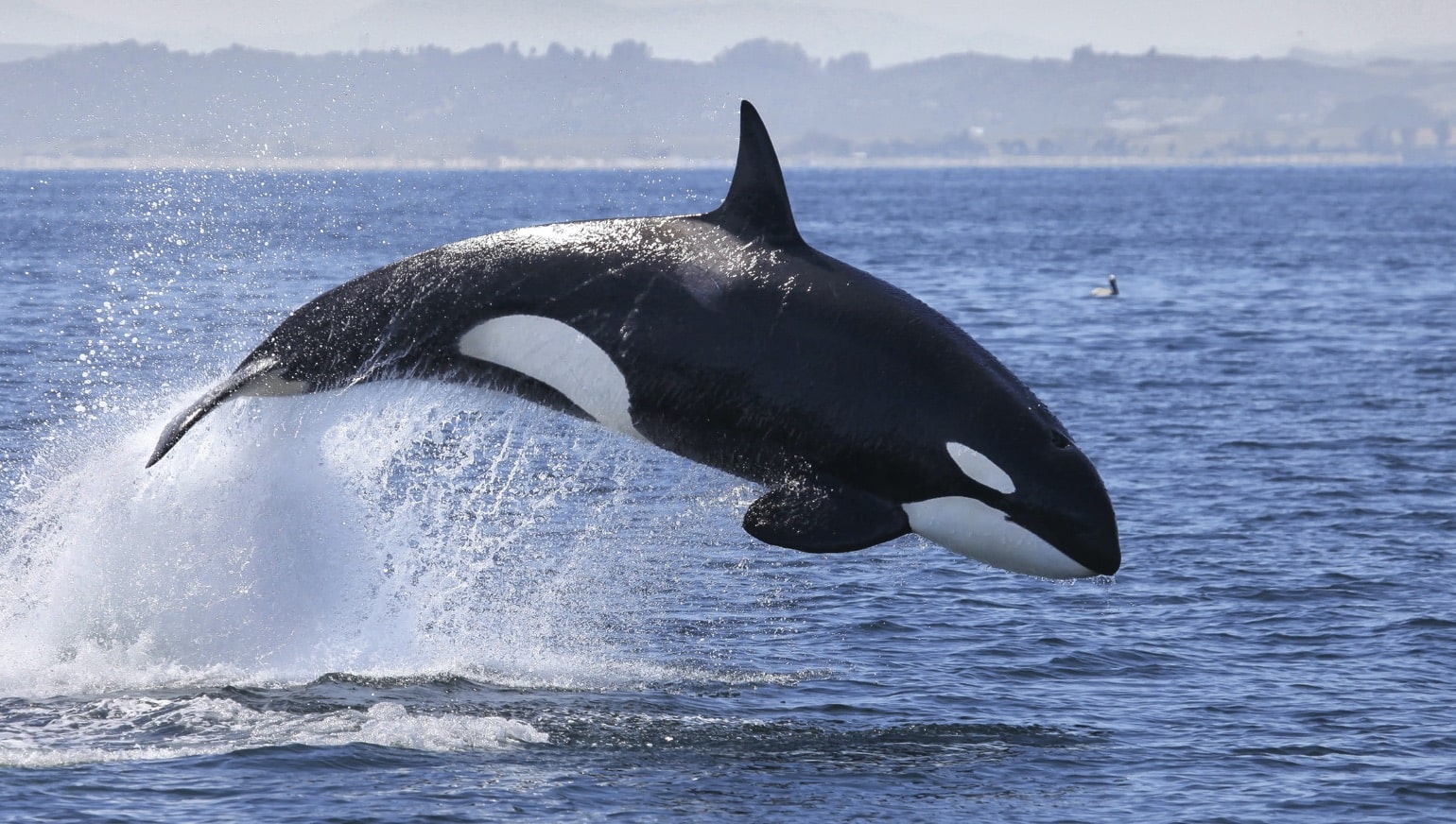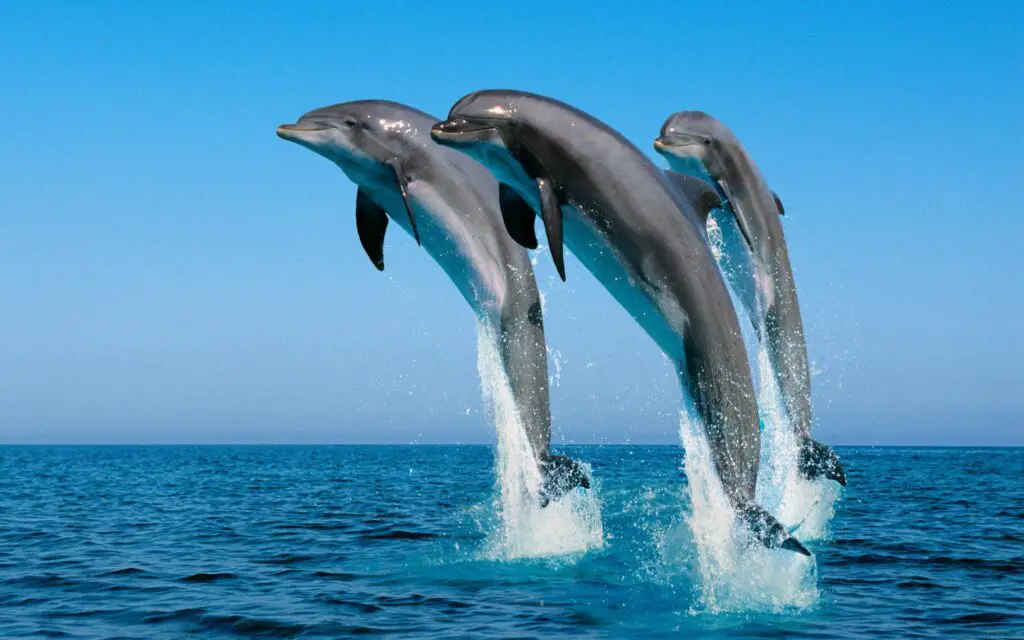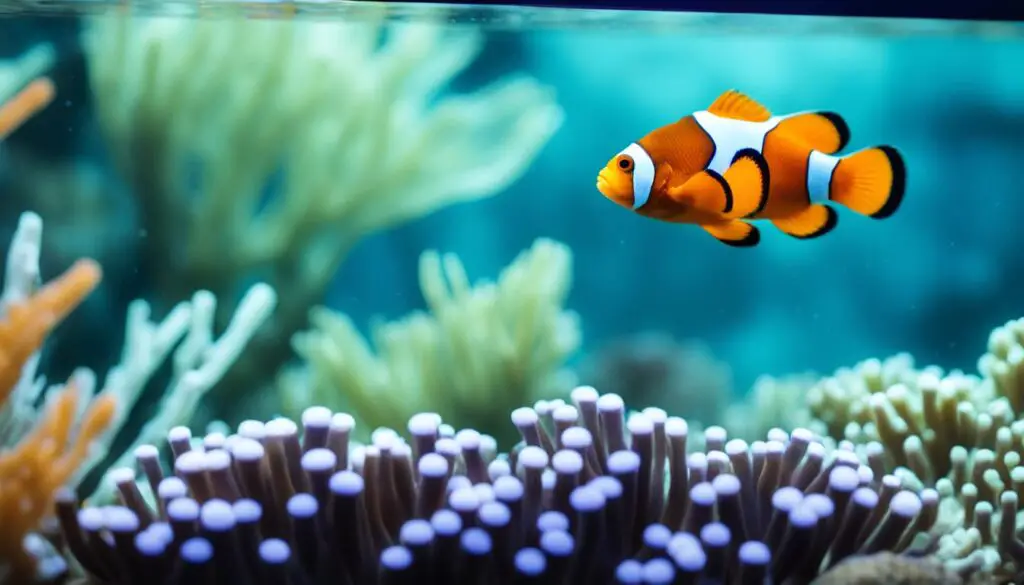Which Whale Is Actually A Dolphin

Introduction
Which Whale Is Actually A Dolphin: The world of marine mammals is as captivating as it is diverse, with an array of creatures that have adapted to the challenges and wonders of life in the oceans. Among these remarkable beings, there exists an intriguing paradox that may leave many perplexed: a whale that is, in fact, a dolphin. This enigma unfolds the fascinating story of the orca, commonly known as the “killer whale,” a creature that is neither a whale nor a ruthless killer, but a member of the dolphin mammals family.
In our exploration of “Which Whale Is Actually A Dolphin,” we embark on a journey to unravel the truth behind the nomenclature and taxonomy of these magnificent marine creatures. We delve into the scientific intricacies that make the orca an integral part of the dolphin family, highlighting the compelling evidence that brings clarity to this seemingly perplexing classification.
While the orca’s name may conjure images of ferocious predators, it is essential to recognize the nuances of their biology, behavior, and evolutionary history. Through the lens of science and research, we uncover the remarkable parallels and distinctions that bind orcas to other dolphins and challenge conventional stereotypes.
As we navigate the depths of this captivating tale, we emerge with a deeper understanding of the interconnectedness of life in the world’s oceans. The orca’s role as both a symbol of marine charisma and a vital component of marine ecosystems reminds us of the importance of conservation and protection in preserving the wonders of our seas. Join us in demystifying the identity of the orca, a dolphin that transcends its name and leaves an indelible mark on the tapestry of marine life.

Which whales are considered dolphins?
Toothed whales include dolphins and orcas, or killer whales, as they’re often known. In fact, orcas are the largest dolphins, growing to be about 32 feet (10 meters) long. Many dolphins only average eight to nine feet (2-3 meters) in length. So yes, orcas are dolphins, and dolphins are whales!
In the world of marine mammals, there exists a group of creatures that may seem perplexing at first glance: certain whales are considered dolphins. Specifically, the dolphins within the family Delphinidae encompass various species, some of which are commonly referred to as “whales” due to their size or physical resemblance to traditional whales. However, their classification as dolphins is based on their biological characteristics and evolutionary history.
The best-known example of this phenomenon is the orca, or killer whale (Orcinus orca), which is the largest member of the dolphin family, Delphinidae. Despite its name and formidable reputation, the orca is, in fact, a type of dolphin. Other species within the Delphinidae family, such as the pilot whale (Globicephala spp.) and false killer whale (Pseudorca crassidens), are also considered dolphins. These marine mammals share critical characteristics with other dolphins, including their warm-blooded physiology, live births, nursing of their young, and need to surface for air.
The classification of these whale species as dolphins serves as a reminder of the complexity of taxonomy and the diverse adaptations that marine mammals have undergone throughout their evolutionary history. While their names may suggest otherwise, their biological features firmly place them within the dolphin family.
Is orca actually a dolphin?
While orcas are members of the marine dolphin family Delphinidae, their overall size is what sets them apart from others in their suborder. Today, if a dolphin reaches a size of more than 30 feet long, it may be referred to by some as a whale, but the rules of taxonomy still classify the orca as a dolphin.
Yes, the orca, often referred to as the “killer whale,” is indeed a type of dolphin. Despite its common name, which implies a connection to whales, the orca belongs to the dolphin family, Delphinidae. The classification of the orca as a dolphin is based on several key biological traits that it shares with other dolphins:
Live Birth: Like all dolphins, orcas give birth to live offspring rather than laying eggs. Female orcas carry their calves in their wombs until they are born.
Mammary Glands: Female orcas have mammary glands that produce milk to nourish their young. They nurse their calves, a characteristic common to all mammals.
Warm-Blooded (Endothermic): Orcas, like other dolphins, are warm-blooded, meaning they can regulate their internal body temperature independently of their environment.
Lungs and Breathing Air: Orcas breathe air through their blowholes, located on the tops of their heads, similar to other dolphins. They must come to the water’s surface periodically to breathe, as opposed to extracting oxygen from water through gills, as fish do.
While the orca’s common name may suggest otherwise, its classification as a dolphin is firmly rooted in its biological characteristics. This designation underscores the intriguing diversity within the world of marine mammals and serves as a reminder that appearances and names can sometimes be deceiving in the realm of taxonomy.
Can a dolphin be a whale?
First thing’s first: all dolphins are whales, but not all whales are dolphins. That’s because the Cetacean order of sea animals encompasses dolphins, porpoises and what we think of as whales. And Cetacean is derived from the Greek word for whale, ketos.
Yes, a dolphin can be considered a type of whale, but it’s important to clarify the terminology and the way these terms are used in biological classification.
In the realm of biological classification, dolphins, along with porpoises, belong to the infraorder Cetacea, which encompasses all cetaceans, including both toothed and baleen whales. Therefore, dolphins are taxonomically classified within the broader group of cetaceans, which includes “whales.”
However, when we commonly refer to “whales,” we often think of the larger cetaceans, like the blue whale, humpback whale, or sperm whale. These are typically classified as “baleen whales” due to their feeding mechanism, which involves baleen plates for filter-feeding.
Dolphins, on the other hand, are often referred to as “toothed whales” because they possess teeth and have a different feeding strategy, which includes hunting fish and squid rather than filter-feeding. So, while dolphins are technically a type of whale within the biological classification, they are usually distinguished from the larger baleen whales due to their size, physical characteristics, and feeding behaviors.
In summary, dolphins are a subgroup within the broader category of “whales” in biological classification, but in everyday language, they are typically differentiated from the larger baleen whales.
Why isn’t a beluga whale a dolphin?
Scientific Name: Delphinapterus leucas
Belugas are toothed whales, and are not part of the oceanic dolphin family. They are classified under the Monodontidae family, which only consists of two species: belugas and narwhals.
Beluga whales (Delphinapterus leucas) are indeed a type of whale, but they are not classified as dolphins. Belugas are part of the family Monodontidae, which includes only two species: the beluga whale and the narwhal. While they share some similarities with dolphins, such as their streamlined bodies and toothed structure, several factors differentiate them from dolphins.
One of the primary distinctions is their taxonomic classification. Dolphins, as a group, belong to the family Delphinidae, which falls under the Odontoceti suborder of cetaceans. Belugas, on the other hand, are placed in a separate family, Monodontidae. This family-level distinction categorizes them differently within the cetacean order.
Additionally, belugas have some unique physical characteristics that set them apart from most dolphins. They are known for their distinct white coloring and prominent melon-shaped forehead. Belugas also have a flexible neck, a feature not typically seen in most dolphins. Their vocalizations, known as “songs of the sea,” are distinct from the vocalizations of dolphins and are a key part of their communication.
In summary, while beluga whales share certain traits with dolphins, they are classified separately within the taxonomy of cetaceans. The primary reason belugas are not considered dolphins is their family-level classification as Monodontidae, distinct from the Delphinidae family that encompasses most dolphins.
Is a sperm whale a dolphin?
Sperm whales belong to the toothed whales but because they don’t look anything like the other toothed whales, they have been categorized as a separate family. Other toothed whale families include the dolphins, porpoises and beaked whales. The sperm whale family is very old.
No, a sperm whale (Physeter macrocephalus) is not a dolphin. Sperm whales belong to a different family within the order Odontoceti, which includes all toothed whales, including dolphins. While both sperm whales and dolphins are toothed whales, they are distinct species with significant differences in terms of size, appearance, behavior, and taxonomy.
Sperm whales are one of the largest toothed whales and are known for their massive heads and the spermaceti organ in their foreheads. They have a distinctive appearance, with a large, square-shaped head and a wrinkled body. Sperm whales are deep-diving predators that primarily feed on squid.
Dolphins, on the other hand, encompass a diverse group of species within the family Delphinidae. They are generally smaller than sperm whales and have a more streamlined body shape. Dolphins are known for their playful behavior, complex social structures, and communication skills. They have a wide range of diets, including fish, squid, and other marine organisms.
While both sperm whales and dolphins are classified as toothed whales, they belong to different families within the Odontoceti suborder. Sperm whales belong to the family Physeteridae, while dolphins are part of the family Delphinidae. These taxonomic distinctions place them in separate categories within the broader group of toothed whales, and they are not considered the same species.
Is A Beluga A whale or a dolphin?
Dolphins and belugas both fit into the category of ‘toothed whales’, as opposed to baleen whales that filter food out of water, like blue whales. Belugas are closely related to the narwhal. This is the only other species in their family, Monodontidae.
A beluga (Delphinapterus leucas) is a type of whale, specifically a toothed whale. While belugas share some physical characteristics with dolphins, such as their streamlined bodies and toothed structure, they are classified within the family Monodontidae, which categorizes them as distinct from most dolphins.
The term “whale” is often used colloquially to refer to all cetaceans, which include both toothed and baleen whales, as well as dolphins and porpoises. However, it’s important to understand that belugas are indeed a type of whale. They are known for their distinctive white coloring and the melon-shaped forehead that is prominent in some other dolphin species.
In summary, a beluga is a whale, specifically a toothed whale, and it belongs to the family Monodontidae. While they may share some behavioral traits with dolphins and have a superficial resemblance to them, their classification as a type of whale is based on their distinct taxonomic group within the order Odontoceti.
Who is smarter orca or dolphin?
Toni Frohoff, research director at TerraMar Research, is confident that orcas are not dumb animals. “If anything, since orcas are the largest member of the dolphin family, their intelligence is perhaps superior to other dolphins,” she told me.
The question of intelligence in the animal kingdom, including among cetaceans like orcas (Orcinus orca) and dolphins, is a complex and debated topic. It’s important to note that intelligence can manifest in various ways, and different species exhibit different cognitive abilities.
Both orcas and dolphins are renowned for their high levels of intelligence. They are known to have large, complex brains relative to their body size, which is often an indicator of advanced cognitive abilities. Dolphins, which include various species such as bottlenose dolphins and spinner dolphins, have been subjects of extensive research due to their remarkable problem-solving skills, intricate social behaviors, and capacity for communication through clicks, whistles, and body language.
Orcas, often referred to as killer whales, are actually the largest members of the dolphin family (Delphinidae). They are known for their sophisticated hunting strategies and complex social structures. Orcas display remarkable cooperative behaviors within their pods and demonstrate a deep understanding of their environments, including the ability to navigate, communicate, and teach skills to younger members.
Comparing the intelligence of orcas to other dolphins is challenging, as intelligence can vary even among individuals within the same species. Additionally, different species may excel in specific cognitive domains, such as problem-solving, communication, or social interactions. While both orcas and dolphins exhibit high levels of intelligence in their respective ways, it is difficult to make a definitive determination about which is smarter overall, as it largely depends on the specific cognitive tasks being assessed and the criteria used for evaluation.
Do orcas eat sharks?
Orcas, which live worldwide, display a wide range of diets and behaviours, including eating sharks, whose organs—especially their livers—are high in fat. But scientists have never before documented orcas performing this kind of consistent, surgical predation on sharks.
Yes, orcas, or killer whales, are known to eat sharks as part of their diet. Orcas are apex predators, which means they are at the top of the marine food chain and have a broad diet that can include various prey species. While their primary diet can vary depending on their geographical location and the availability of prey, orcas are opportunistic feeders known for their versatility in hunting.
Orcas have been observed hunting and consuming different species of sharks, including great white sharks. These hunting behaviors can involve cooperative strategies within their pods, where they work together to isolate and overpower their prey. Orcas are highly skilled predators and have been known to target the liver of sharks, which is rich in energy-rich oils.
It’s important to note that while orcas do eat sharks, they also consume a wide range of other marine creatures, such as fish, seals, sea lions, and even other dolphins. Their adaptability and diverse diet contribute to their success as apex predators in various oceanic ecosystems.
The predation of sharks by orcas is a fascinating aspect of their ecological role, highlighting the complexity of marine food webs and the interplay between different marine species in the world’s oceans.

Conclusion
In our journey to uncover “Which Whale Is Actually A Dolphin,” we have embarked on a voyage through the fascinating world of marine taxonomy and cetacean biology. The paradoxical identity of the orca, often referred to as the “killer whale,” as a member of the dolphin family is a testament to the complexity of life in the oceans and the intricacies of scientific classification.
Throughout our exploration, we have unraveled the compelling evidence that firmly establishes the orca, or Orcinus orca, as a true dolphin. This designation is rooted in the creature’s biological traits and evolutionary history, connecting it to other dolphins more closely than to the larger whales. While the orca’s common name may evoke images of predatory ferocity, it is vital to recognize the multifaceted nature of this marine giant.
The orca’s role within the actually dolphin family highlights the diverse and often surprising relationships that exist among marine mammals. It underscores the importance of rigorous scientific inquiry in understanding the natural world and dispelling misconceptions. Beyond its taxonomic identity, the orca symbolizes the profound interconnectedness of all life in the oceans, where each species plays a unique role in the delicate balance of marine ecosystems.
Our exploration, let us carry forward the knowledge that transcends the orca’s name and celebrate the rich diversity of life that inhabits our planet’s oceans. This knowledge reminds us of the need for responsible stewardship and conservation efforts to protect these remarkable creatures and the environments they call home. The orca, a dolphin by birthright, continues to inspire awe and reverence, serving as a powerful ambassador for the beauty and complexity of life beneath the waves.



